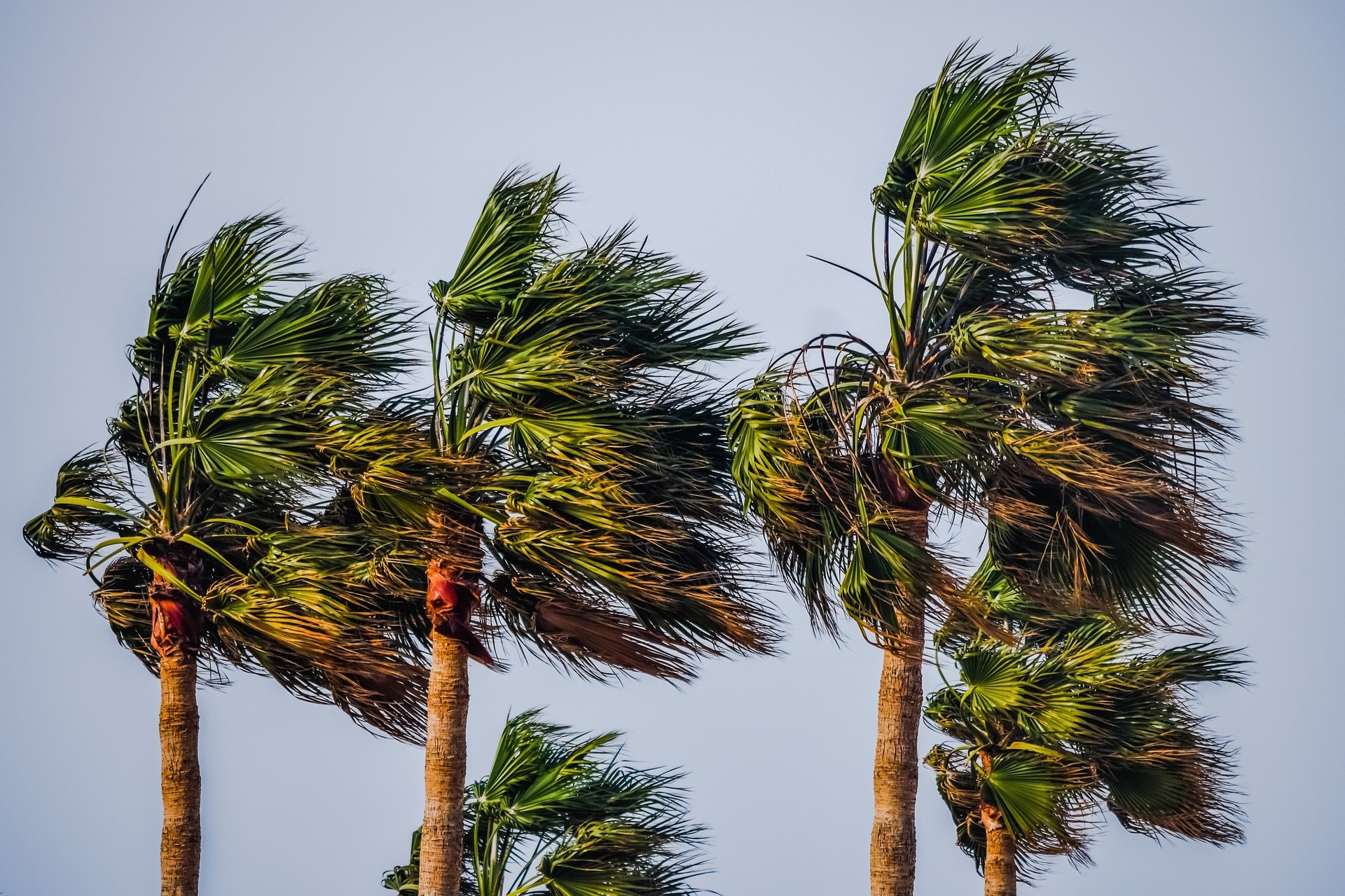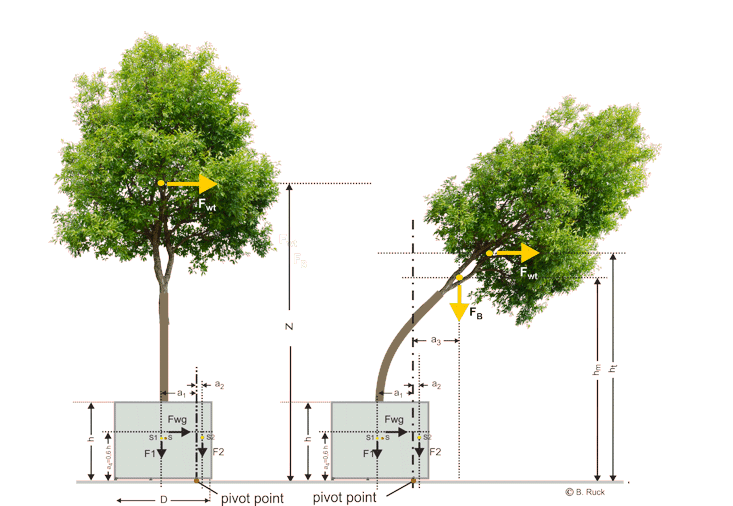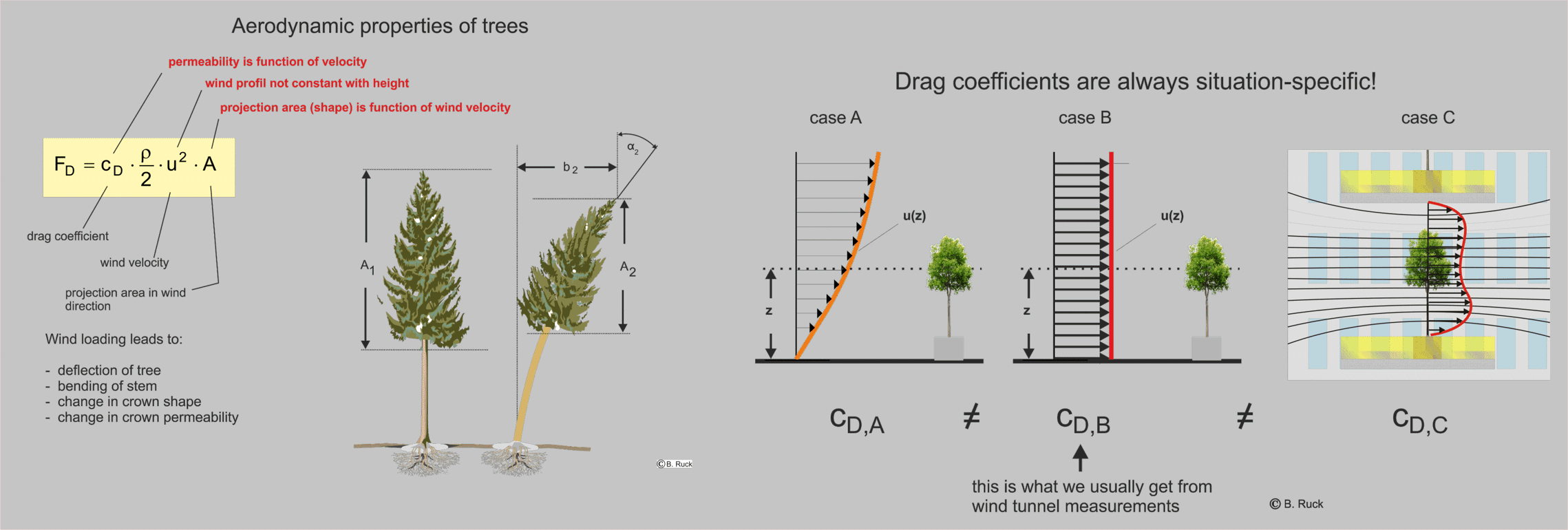WIND FORCES ACTING ON TREES ON TERRACES OF BUILDINGS
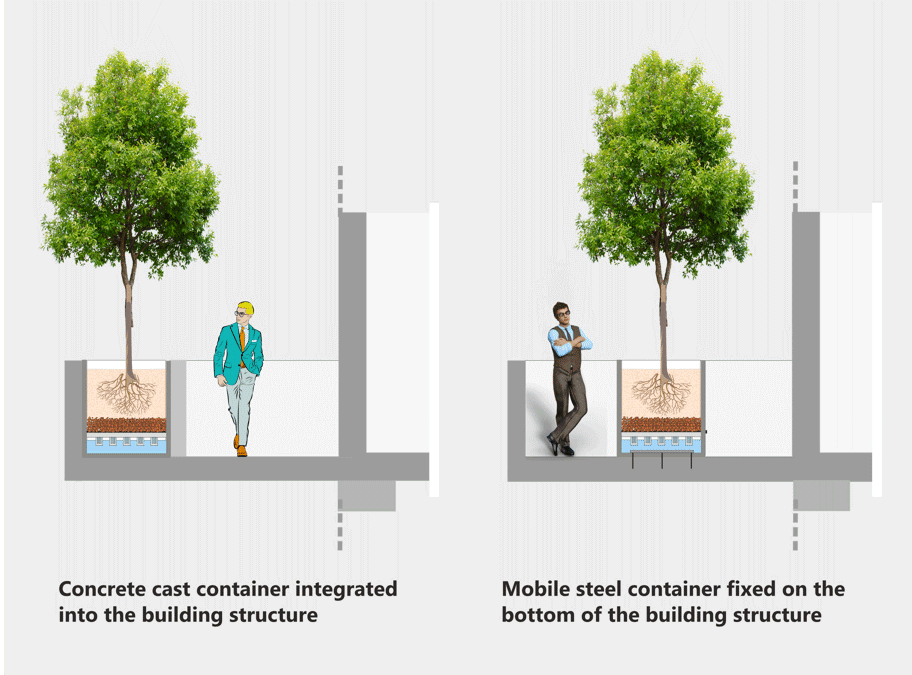
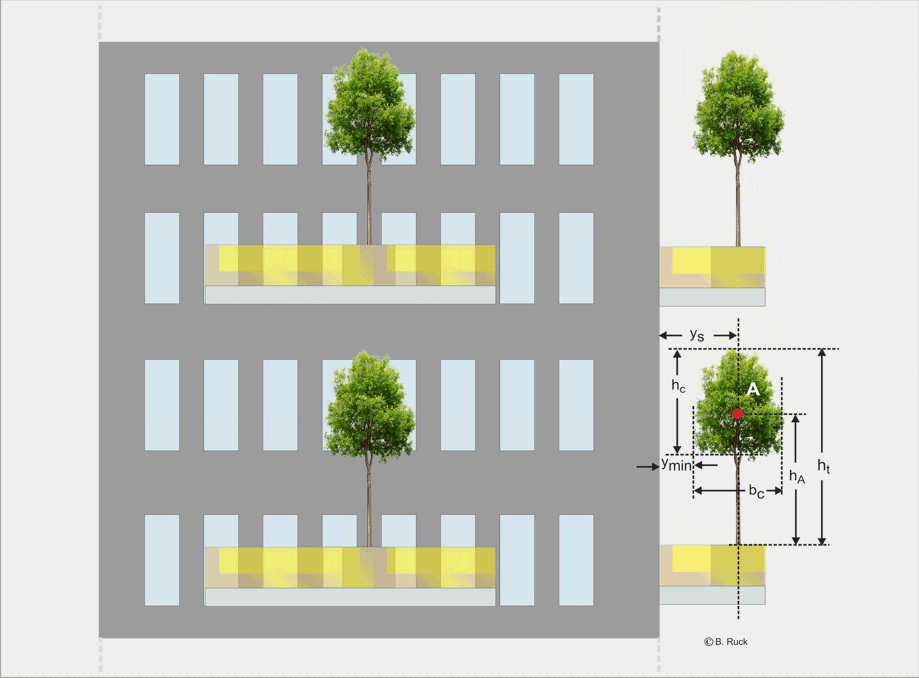
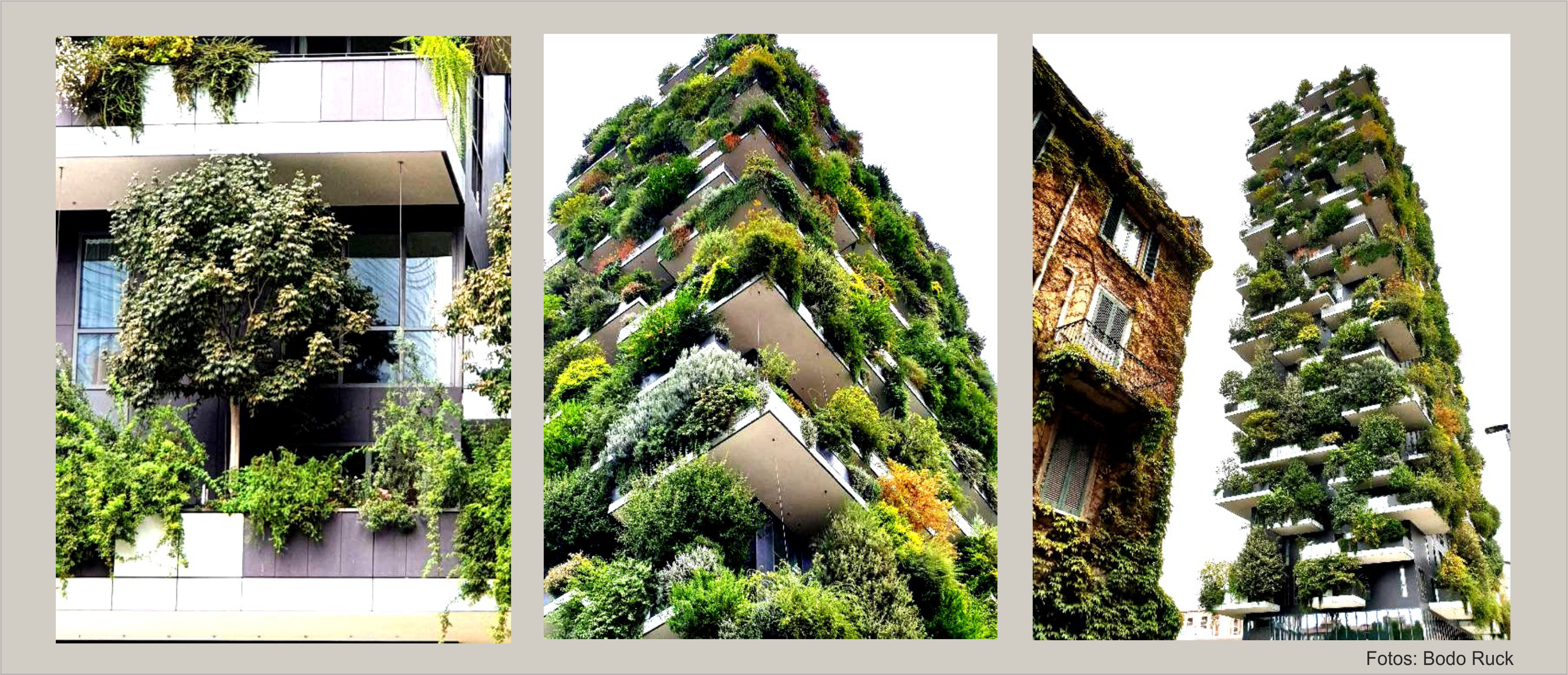
Example: 'Bosco
verticale' of Stefano Boeri/Mailand
|
If trees are integrated into the facades of buildings, they
must meet the same safety requirements as building parts,
such as technical facade elements, balconies, windbreaks,
roofs, etc.
|
|
This means that integrated trees have to withstand the
same wind speeds as the building or parts of it. The layout
speeds (gust speeds) are based
on meteorological observations that have been carried out
over decades. They are based on a return period of 50 years
(highest gust speeds within 50 years).
|
|
WIND LOAD ON A TREE AT GROUND LEVEL AND ON A HIGH-RISE TERRACE |
The following example shows the significant difference
between the wind forces on a tree (here: Pinus Nigra - black
pine), planted on level ground in the free, undisturbed flow
and in a planter on the terrace of a high-rise building
(assumed height: 50 m): |
|
|
Ground level (without building):
Height of centroid of area (projection of
crown) above ground: 4.0 m
Projection
area of the crown: 5 m²
Lever arm: 4.0 m
Gust velocity: typ. 27.58
m / s
Amplification factor (no building,
free-standing tree): 1.0
Layout velocity:
27.58 m / s
Horizontal wind force: 1.02 kN
Torque at the tree foot: 4.99 kNm
Minimum trunk diameter * (without safety
factor): 12.59 cm |
|
Terrace of a high-rise building:
Height of centroid of area (projection of
crown) above ground: 50.0 m
Projection
area of the crown: 5.0 m²
Lever arm 4.0 m
Gust velocity: typ.
39.98 m / s
Amplification factor (wind gain
on the building): 1.5
Specific layout
velocity: 59.97 m / s
Horizontal wind force:
4.83 kN
Torque at the tree foot: 23.59 kNm
Minimum
trunk diameter * (without safety factor): 21.12
cm |
|
|
|
*
Required trunk diameter against trunk
breakage is set approximately constant with the height.
Here, for
example, the trunk diameter at a height of 1 m can be used.
| As you can
see, the identical tree (or large shrub) experiences almost
five times the wind load! It is therefore absolutely
necessary for the installation of planters with trees/large
bushes in the facade of high-rise buildings to take into
account in advance the local wind forces depending on the
tree geometry, the height above ground, the wind zone, the
terrain category, the aerodynamic exposure on the building
and, if necessary, the neighboring buildings. Only then, a
decision can be made whether a planter with tree is in a
safe position. Taking into account the weights of tree and
of planter/substrate/soil, it can be assessed, whether
mechanical safety measures are required.
|
|
WIND
SHELTER BY TREES, TREE BELTS/BELTS ON MOUNDS
Wind shelter belts are used to calm surfaces in agriculture
and industry. In order to protect larger areas from wind, the shelter belts are often planted on base walls.
|
|
|


